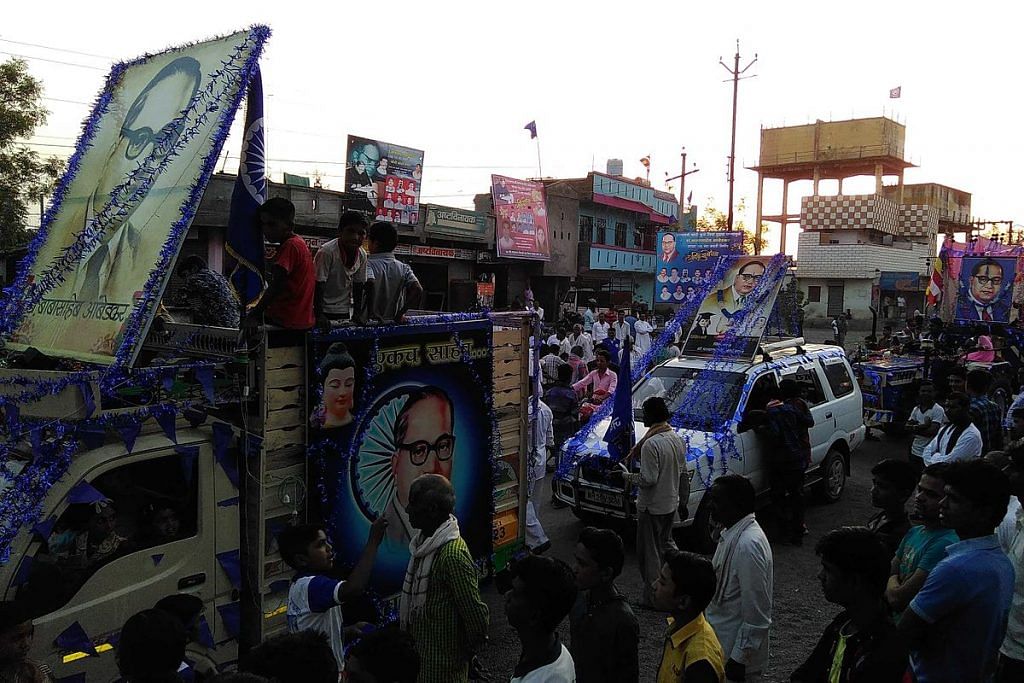It is necessary to understand why neither of the great leaders, Ambedkar and Kanshi Ram, were branded as extremists.
In this age of digital Ambedkarism, it is important to keep in mind that neither Baba Saheb Ambedkar nor Kanshi Ram were haters of Hindu religion; they were critics of discriminatory practices of the Hindu religion.
Baba Saheb said that the caste system has polluted Indian culture to such an extent that even other religions in India have been affected.
Kanshi Ram used to say,“Like all of us in India, I also want to see a casteless society. It is very hard to achieve or even impossible to do so, but I know how to handle caste.”
Now it is necessary to understand why neither of these two great leaders were branded as extremists.
Extremism has never been a part of the Ambedkarite mission; it always stood for reasonable criticism, and called for distancing itself from hate and divisiveness. Baba Saheb Ambedkar’s secularism is an integral part of this ideology; it doesn’t oppose any person’s belief system, rather it promotes scientific thinking and opposes discrimination.
Whoever calls himself, or herself, an Ambedkarite must understand that Baba Saheb stood for democratic rules. He did not endorse any particular ideology and did not impose it on others.
But in this new generation of digital revolution, the easy expression of thought is very lucrative. People inspired by anti-caste crusader missions are writing on caste issues, social injustice and other topics. But there is also a small section among these people who, while expressing their thoughts, are not able to identify the line that leaders like Baba Saheb and Kanshi Ram drew, and never crossed.
On 21 May, when Bhim Army organised a massive rally at Jantar Mantar, some enthusiastic people did something extremely unacceptable by showing a shoe to the image of a Hindu deity. This made the whole rally controversial, which Bhim Army didn’t intend to do.
Recently, in Muzaffarnagar, a Dalit youth was attacked by men from right wing groups, and was made to chant ‘Jai Shri Ram’. The video of the incident has gone viral. This Dalit man had earlier posted a video about Hindu deities on social media.
Earlier, at the time of Saharnpur violence, two Dalit youth were also booked for provocative posts on social media about Hinduism.
There is no denial that this anti-Hindu extremism is building as a counter to the ascendant Hindu vigilantism. Every time there is news of an atrocity, it makes a deep impression on the minds of youths belonging to that social community. Some young Ambedkarites in Muzaffarnagar told me that they will protest against the beating up of Vipin (a Dalit man attacked by the Hindu fringe) by calling for a bandh in the district.
Negative thoughts propagate easily, and at a more rapid pace. Just like every other ideology, a radical section has developed in the Ambedkarism circle too. Several people have directly started criticising people by calling out their particular castes. But Baba Saheb was a critic of the caste system, and the privileges gained due to the system. On social media, the views of these radical Ambedkarites are very shrill. This sends a very negative message to liberal people, who belong to the upper castes, and hinders the understanding between liberal sections from both sides.
The goal of Ambedkarism is to end the caste system by progressive means, and by building a general sentiment among different sections of society against regressive social hierarchies. This can be possible largely by adding people from other sections to your platform, and not by creating a rift.
The most crucial topic is Hinduism. It is a historical fact that Baba Saheb left Hinduism and embraced Buddhism, but he was never against any religion. His mission was never anti-Hinduism. Even Kanshi Ram focused on educating people about the demerits of being a Hindu because it always identifies a person by his, or her, caste status. So, he wanted people from disadvantaged sections of Hindu society to leave Hinduism.
Both the ideas of Baba Saheb and Kanshi Ram have positive connotations, but on social media, radical people often post content that not just deviates from what the leaders have said, but also ends up hurting feelings. They forget that the content they are posting is not limited to them, or their targeted audience. This is one of the major reasons why many radical social media Ambedkarities have antagonised other social groups.
There is a need to understand that the right and nuanced approach is an essential element of Ambedkarism. People in today’s digital era must understand that the Ambedkarite mission is to unite people, bring societies closer; even traces of extremism will leave the community isolated. It will hamper the progress of this movement, and give rise to distrust in society. This, in turn, will result in the failure of any effort at social engineering of the kind witnessed in 2007 UP elections.
Devashish Jarariya is a political analyst & social media activist at BSP
